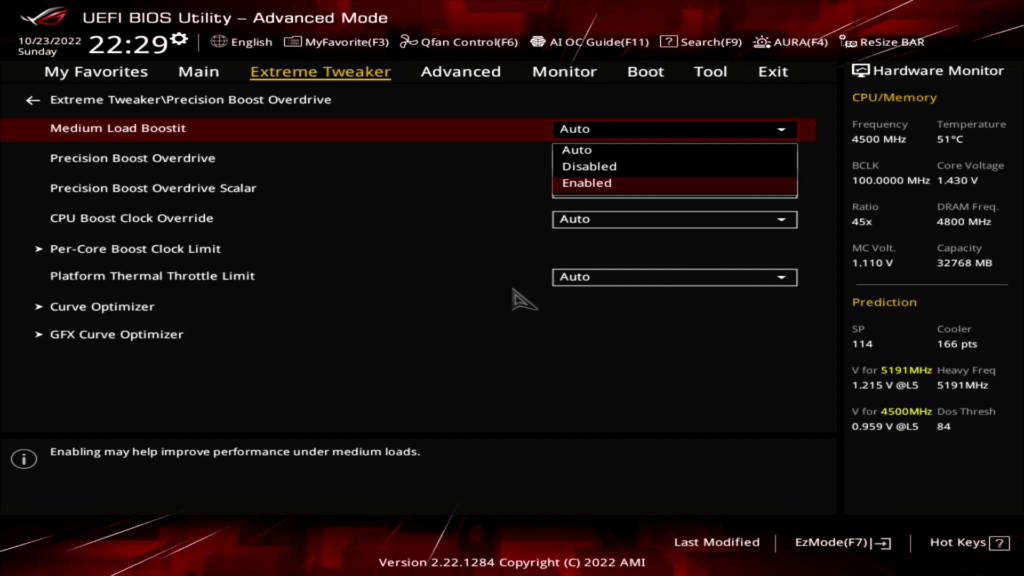ASUS Medium Load Boostit works around the Precision Boost C-state limiter to enable higher performance in multi-core workloads.

To understand its function, we must review the AMD Precision Boost 2 infrastructure C-state limiter.
Now, let us have a closer look at the Precision Boost infrastructure limiters exposed to the end user. While all these limiters are present on a Ryzen 7000 CPU, it does not mean they are all active or configured. Some limiters are not relevant to a desktop system and may be ignored.
C-state Boost is a specific boost limiter present on early engineering samples. Effectively, C-State Boost limits the maximum frequency when a certain number of active cores is exceeded. For the 16-core 7950X, the C-State Boost limit would force the CPU to run at 5.2 GHz when more than four cores are active. This Precision Boost limiter is not active on retail processors.
I was not wrong when stating the C-State Boost Limit was not present with the hardware and BIOSes available at the Ryzen 7000 launch. However, I should have clarified that this limiter may return, as with the latest AGESA 1.0.0.3. With AGESA 1003, the Ryzen 7000 CPU frequency is limited to 5.5 GHz when more than four cores are active.
To understand the impact of the C-state limiter on the performance and overclocking experience, I suggest you read my post titled “Update on Ryzen 7000 C-State Boost Limiter.”
The ROG OC team noticed the C-state boost limit during the initial testing with the engineering sample CPUs and developed medium load boostit to work around it and enable higher performance. Since the C-State boost was not present on the launch motherboard and BIOSes, I ignored it in all my initial Ryzen 7000 overclocking guides.
Anyway, with the re-introduction of the C-state boost limiter in AGESA 1003, medium load boostit is now relevant again. When we enable this option, the boost curve looks as follows.

As you can see, instead of the boost curve immediately dropping off to 5.5 GHz when more than four cores are active, the frequency boosts as high as the Precision Boost algorithm allows.